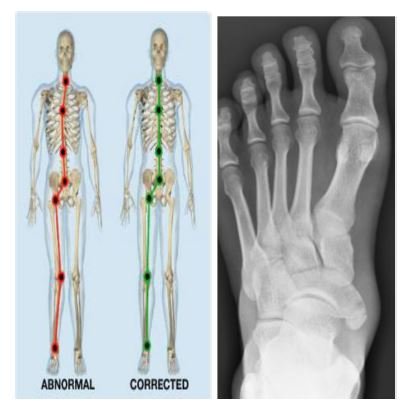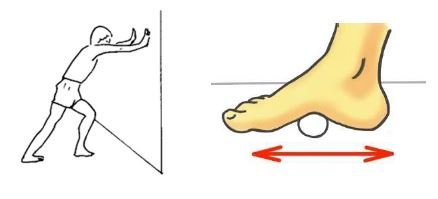Symptomatic Flatfoot

What are flat feet?
People with flat feet, also known as collapsed arches, have either no arch in their feet or one that is very low.
There is usually a gap beneath the inner part of the foot when a person stands, as the arch raises off the ground slightly.
The arches provide a spring to the step and help to distribute body weight across the feet and legs. A collapsed arch loses this function.
When people have flat feet, their feet may roll to the inner side when they are standing and walking. This is called overpronation, and it may also cause the feet to point outward.
Many people with flat feet have no symptoms, but others will experience a variety of symptoms that generally depends on the severity of the condition.

Symptoms
The most common symptom is pain in the feet. Abnormal stresses on the knee and hip may result in pain in these joints.
Pain most commonly affects the following parts of the body:
- Inside of the ankle
- Arch of the foot
- Calf
- Knee
- Hip
- Lower back
- Lower legs

Causes
Common causes include:
- Genetic factors
- Damage to the posterior tibial tendon
- Arthritis of the ankle or the foot.
- Nervous system or muscle diseases
Flat feet can develop with age too. Daily use of the feet can cause the posterior tibial tendon to weaken. This tendon is the primary support structure for the foot arch. The tendon can become inflamed, called tendonitis, or tear after overuse. Damage to the tendon may cause the foot arch to flatten.

Diagnosis
People with flat feet who do not experience pain or other symptoms do not usually need to consult a doctor. However, anyone with the following symptoms should seek medical advice:
- flat feet that have only developed recently.
- pain in the feet, ankles, or lower limbs.
- symptoms that do not improve with supportive, well-fitted shoes.
Exercises
A podiatrist or physical therapist may recommend specific exercises to manage the symptoms of flat feet or prevent them from developing.

Heel cord stretching and The golf ball roll
Treatment
If flat feet are causing pain, then supportive, well-fitted shoes can help. Fitted insoles and orthotics or customdesigned arch supports may relieve pressure on the arch and reduce pain. However, these products only treat the symptoms and do not provide long-lasting benefits.
Doctors may advise some people to rest until their symptoms improve and to avoid activities that might aggravate the foot or feet.

Minimally Invasive Flatfoot surgery.
There is a minimally invasive procedure to correct the misalignment of the feet. It is called EOTTS (Extraosseous Tarsal Tunnel Stabilization). A titanium stent is placed into the natural space between the ankle and heel bones to realign and stabilize the foot instantly. This is done through a very small incision on the outer area of the foot. This is long term solution to prevent degenerative problems from setting in. After the procedure, the patient is able to walk immediately and natural joint movement is preserved.
Collapsed Flat Foot

Realligned to normal post EOTTS


Is EOTTS enough?
In almost 90% of pediatric cases and early adult flatfoot cases, the EOTTS procedure alone is sufficient to restore alignment of the foot and prevent long term tendon damage in a flatfoot. If the flatfeet is more severe or not flexible, then the titanium stent alone will not be sufficient to address the problem and you may require additional procedures. The surgery depends on the diagnosis, aimed at surgically correcting the shape and function of the foot. So that tendon and bone degeneration do not occur. Your surgeon will be able to discuss more with you in detail.
- Consultant Orthopaedic Surgeon
- Specialist in Orthopaedic Sports Medicine







